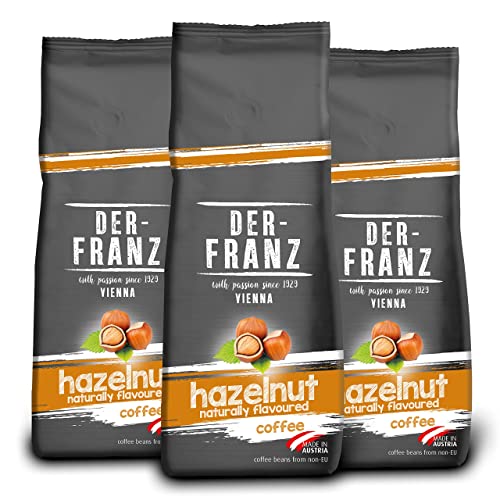Types of Coffee Beans
Behind every cup of coffee we drink, there are carefully graded bean. These beans are graded on the size, color and shape.
The AA grade is given to coffee beans that meet all the criteria above, with the exception that they should not have more than three deficient quality (quakers). Typically, these are Kenya AA beans.
Arabica
Arabica coffee beans are also referred to as Coffea Arabicica and are the most sought-after coffee bean in the world. Legend has it that coffee was first discovered in Ethiopia when the goat herder saw his herd's dancing more vigorously after eating the fruit of the coffee plant. This led him to experiment with roasting the seeds and brewing them, creating the drink that we drink today.
There are many varieties of coffee plants, however only two are used to create our most popular brews: arabica and robusta. The taste of the final drink is usually more appealing with the robusta variety.
There are a number of different cultivars of arabica, with each having its own unique flavour profile. Two of the most well-known varieties are Typica and Bourbon, from which all other varieties of arabica were developed either through natural mutation or through deliberate crossbreeding. Scott Labs developed the SL28 cultivar in Kenya which is famous for its distinct chocolate flavor.
The flavor of a particular arabica variety is determined by the climate in which it is planted, and also how it is handled and cooked. The type of shade that the tree gets can have a significant effect on the final product.
Robusta
Robusta coffee beans, also known as coffee canephora, are the second most widely used type of coffee. They are the beans used to make the majority of instant drinks and have twice as much caffeine as Arabica Coffee Beans. They are also used in a variety of espresso blends, specifically for cappuccino and caffe latte.
The Coffea Canephora plant originated in Sub-Saharan Africa, but it has since been cultivated all over the globe. It can be grown at lower elevations and can withstand higher temperatures than Arabica coffee plants, making it a better choice for farmers. Vietnam is currently the largest producer of robusta coffee followed by Brazil and Indonesia.
The robusta plant is a good coffee however it's not a favorite among cupping enthusiasts due to its bitter taste and burnt rubber notes. Many large coffee companies employ arabica beans to make their top-quality products since it's regarded as a lower-quality coffee.
The demand for premium coffees is growing, and small roasters are trying to take advantage its superior qualities. Our Valhalla Java coffee and Death With Coffee coffee are two examples. Both are exceptional robustas that are blended with arabica to achieve the perfect balance of strength and flavour. These beans are from Uganda in a country where robusta is a staple of the coffee industry for many years. You can read more about them here.

Liberica
Liberica coffee beans are a rare variety that are seldom used around the globe. barista coffee beans comprise less than 2% of world's coffee consumption, and are often overlooked due to the fact that they don't contain the same amount of caffeine that Arabica and Robusta do. These beans have a distinctive taste that a majority of coffee drinkers find irresistible.
Despite being very rare, Liberica coffee beans are still popular in a few regions of Asia. These beans are most common in Malaysia and Indonesia where there is a huge Muslim community. In these countries the coffee industry has been robust for a long time. A cup of coffee after a prayer is an integral part of their customs.
Liberica coffee's roots go back to the 1890s, when a global epidemic caused by rust on the coffee leaf destroyed the arabica crop. This triggered coffee producers to find a more resilient species that could thrive in tropical climates. They quickly discovered the Liberica plant.
Liberica plants have a high tolerance for diseases and pests which makes them an ideal substitute for the ravaged arabica crop. Liberica can also grow in lower altitudes and high temperatures, which allows it to thrive in the Southeast Asian climate. Liberica beans are used to produce most of the coffee in the Philippines and Indonesia.
Excelsa
Although it's not common for coffee lovers to come across excelsa beans, they are gaining recognition for their distinctive flavor. According to Komal Sable of South India Coffee Co. who is a fifth-generation coffee farmer, these beans have a similar teardrop shape, but are smaller. It's important to remember that despite the resemblance in family between excelsa and liberica however, this species is not distinct from either.
As such, it's a bit hazy as to how excelsa beans should be categorized and it's this confusion that has largely been the cause of the beans' absence in the contemporary world of coffee. Many roasters, farmers, and brewers don't know how to properly cultivate and use these beans.
In the end, it's entirely up to the individual to determine whether they like the flavor of excelsa coffee and it could take a amount of time to discover a blend that is suitable for their tastes. The most important thing is to remain open-minded and give every type of coffee you can until you find one you really enjoy. If you do this you'll be able to discover the wide possibilities that these unique beans can provide. This is a journey worth the effort.
